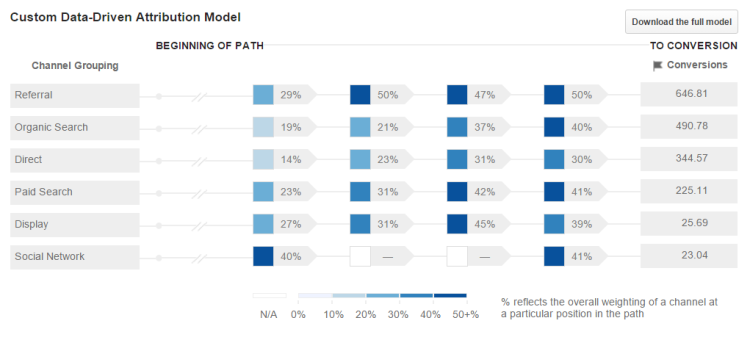You are viewing our site as an Agent, Switch Your View:
Agent | Broker Reset Filters to Default Back to ListNew Update to Google Ads: What Agents Need to Know
October 17 2021
 It's the biggest news you probably haven't heard: last-click attribution has been replaced by data-driven attribution as the default conversion model in Google Ads.
It's the biggest news you probably haven't heard: last-click attribution has been replaced by data-driven attribution as the default conversion model in Google Ads.
You may not be familiar with the terms "last-click attribution" or "conversion model," and it's possible that you're wondering why (or if) any of this should matter to you.
Trust us, this is important news. Generating leads is essential for real estate agents, and changes in conversion models could result in more and better leads for some agents and fewer leads for others.
In this article, we'll define attribution models and learn how they help agents, and establish the difference between last-click and data-driven attribution.
What is an Attribution Model?
"Attribution model" is a technical term that explains a simple sentiment: determining which marketing campaigns are responsible for individual digital marketing conversions.
Marketing conversions are when people engaging with marketing materials take the desired action, such as clicking a link or filling out a form. Attribution models, then, exist to give credit to the marketing materials that are actually delivering new leads.
Without attribution models, marketers have to guess which marketing materials and campaigns are responsible for new leads and actions.
For example, some agents run ads on Facebook, Google, and Instagram. Without an attribution model, you won't be able to identify the ads, platforms, and actions that are delivering you leads. But with an attribution model, you have a way of discovering which specific ads and platforms caused your leads to engage, so you can adjust your budget and strategy accordingly.
Marketing is most useful when it can be measured, so a functional attribution model is a major boon to any marketing campaign.
Last-Click Attribution vs. Data-Driven Attribution
Attribution models may be important, but they are not standardized. Last-click attribution gives the full share of conversion credit to the most recent marketing interaction, while data-driven attribution weights multiple stages and touchpoints that leads engage with throughout their buying journey.
Consider a hypothetical buyer or seller's online journey: First, they search "real estate agents near me" on Google. They glance at the list of local real estate agents' Google business profiles, see your name toward the top, click on your profile, and briefly read your information. A few hours later, they log into Facebook and see one of your ads. They remember you from their Google search, click on the ad, submit their information, and become a hot lead.
Which marketing platform deserves credit? Is it the Google search result? After all, that's where the buyer or seller first saw your name.
That said, wasn't Facebook where the person actually took the action required to become a lead?
Last-click and data-driven attribution models take different approaches to this quandary. In a last-click attribution model, your Facebook ad receives all the credit for the marketing conversion, since that was the last marketing touchpoint before the user took action to become a lead.
Data-driven attribution is savvier and more holistic. Instead of only giving credit to the last marketing touch point, data-driven attribution would give credit to both your Google and Facebook ads, using a technical weighting system to attribute shared credit.

The shift to data-driven attribution is an indication that Google recognizes just how complicated digital marketing is, and wants to help advertisers understand where their leads are coming from.
Learn how Homesnape Concierge can help you navigate data-driven attribution.
To view the original article, visit the Homesnap blog.









